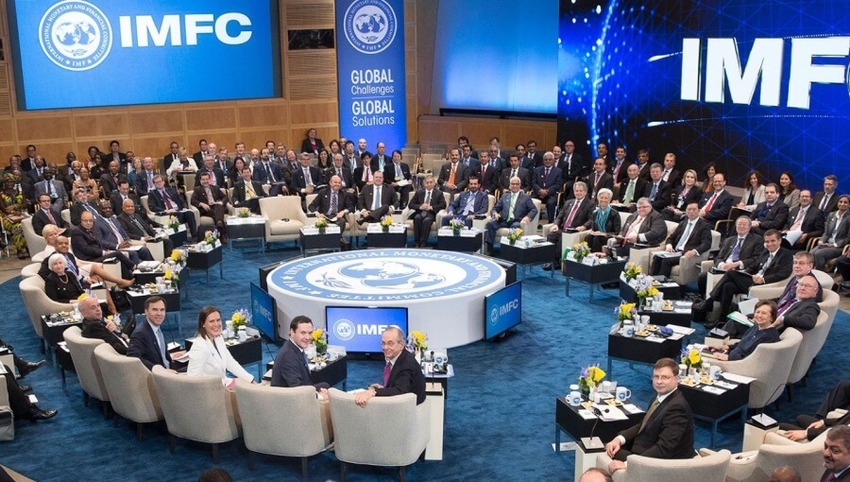The IMF downgraded its outlook for the global economy this year and next on Tuesday while providing an even more pessimistic assessment of what may lie ahead due to soaring inflation and significant slowdowns in the United States and China.
Since April, the outlook has drastically worsened, according to IMF Chief Economist Pierre-Olivier Gourinchas. Only two years after the previous recession, the world may soon be on the verge of another one.
He stated during a briefing that “the three greatest economies in the world, the United States, China, and the euro area, are stalling with significant ramifications for the global picture.”
The IMF revised down the 2022 global GDP projection to 3.2 percent in its most recent World Economic Outlook, which is four tenths of a point lower than the April forecast and roughly half the rate from the previous year.
The paper stated that after a “tentative rebound” from the pandemic downturn last year, “gloomier events in 2022 as dangers began to materialize” followed.
The IMF stated that “several shocks have hit a world economy already weakened by the pandemic,” including the conflict in Ukraine, which has increased food and energy costs globally and forced central banks to rapidly boost interest rates.
China’s economy has been hampered by 19 lockdowns and a rising real estate crisis, while the US economy is being severely slowed by the Federal Reserve’s relentless interest rate hikes.
The IMF, however, cautioned that the bad news would not end there, noting that “risks to the forecast remain heavily biased to the downside” and that if they materialize, they could plunge the world economy into one of the worst recessions in the previous 50 years.
The aftermath of the Ukraine war, which could result in Russia cutting off natural gas supplies to Europe, as well as an increase in prices and the threat of famines because of the war’s stranglehold on grain supply, are major causes for concern. The WEO issued a foreboding warning, stating that “such shocks could, if sufficiently severe, trigger a combination of recession accompanied by high and rising inflation” (also known as “stagflation”).
By 2023, growth would be slowed to 2.0 percent as a result. Since 1970, the rate of global growth has only been five times slower, according to the analysis. That would be “coming pretty close to a global recession,” according to Gourinchas.
Prioritizing Inflation
According to the fund, officials should prioritize bringing rising prices under control even if doing so hurts their populace because the consequences of unchecked inflation would be substantially worse.
The “synchronized” responses by the main central banks to the inflation danger, according to Gourinchas, are “historically unprecedented, and their implications are expected to bite.” He added that delaying the implementation of tighter monetary policy will simply make the pain worse.
The IMF now expects consumer prices to rise by 8.3 percent this year, almost a full point higher than previously predicted, while consumer prices in emerging market economies are expected to rise by 9.5 percent.
However, “additional supply-related shocks from the crisis in Ukraine to food and energy prices might dramatically boost headline inflation.”
For poor countries least equipped to handle the shock, where food takes up a larger portion of household expenditures, that would make things worse.
The United States and China are both slowing down
The IMF reported that although the global economy performed slightly better than anticipated in the first three months of the year, it “shrunk in the second quarter – the first contraction since 2020.” The IMF shaved more than a point from the previous forecasts and decreased growth projections for the majority of nations, with significant changes for China and the US.
In light of sluggish consumer spending and rising interest rates, the fund now predicts that the US will grow by just 2.3 percent this year. The research also said that a recession, which is defined as two quarters of negative growth, may have already started.
According to Gourinchas, the US is on a “very tight path” to escape a recession, and even a “little shock” might send the economy into a slump.
With the exception of the 2020 pandemic problem, China’s economy is predicted to grow at a meager 3.3 percent in 2022, which will be the slowest growth rate in more than four decades, according to the report. This is because of ongoing Covid worries and a “worsening” property issue.
According to the report, “the downturn in China has worldwide implications: lockdowns added to global supply chain disruptions and the drop in domestic expenditure are hurting demand for goods and services from China’s trade partners.”
The WEO noted that there were several exceptions to the bleak forecast, including upgrades for Italy, Brazil, and Mexico as well as for Russia, which is still anticipated to decrease but is benefiting from increased oil prices as a result of Western sanctions.


0 Comments